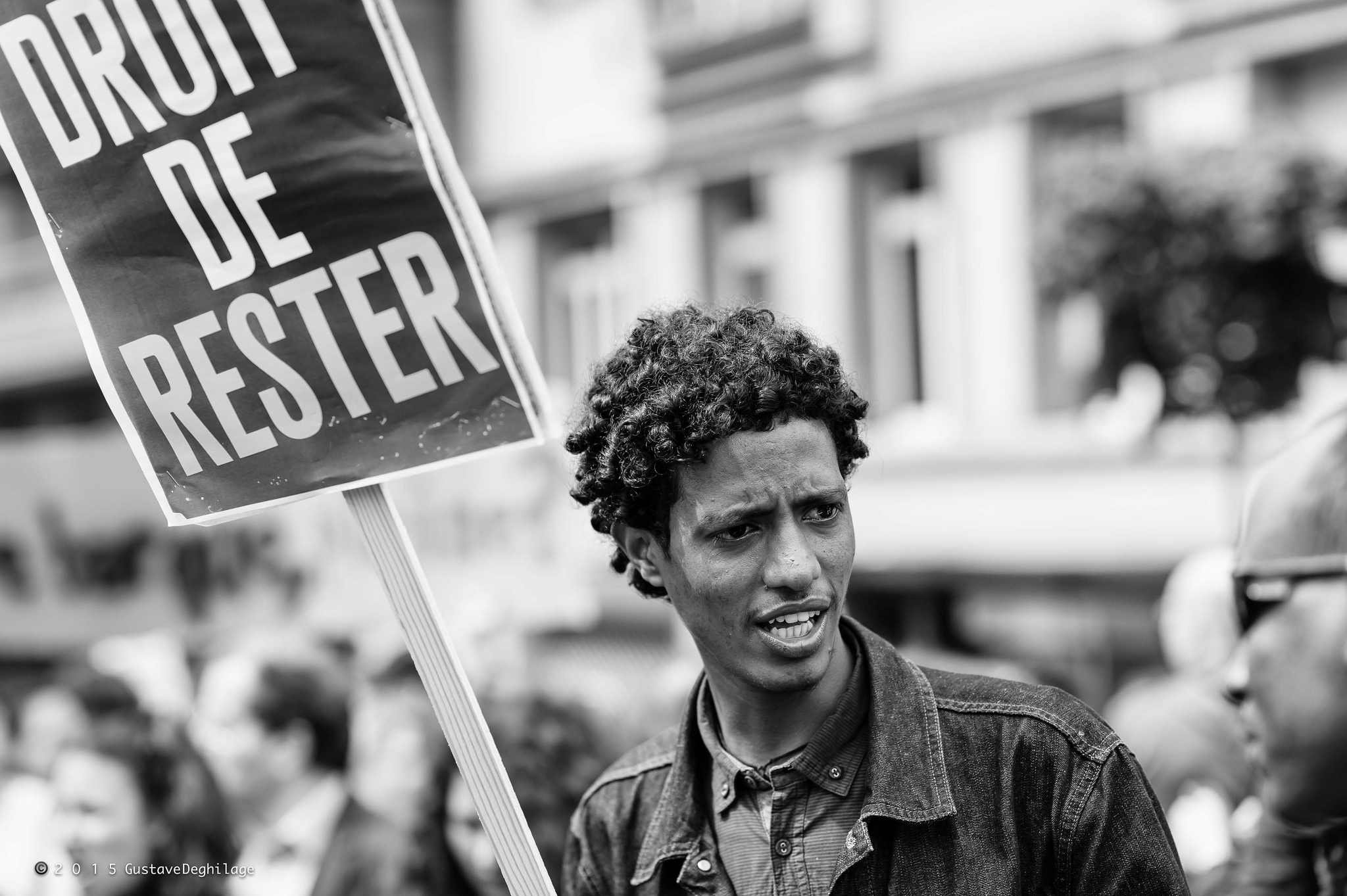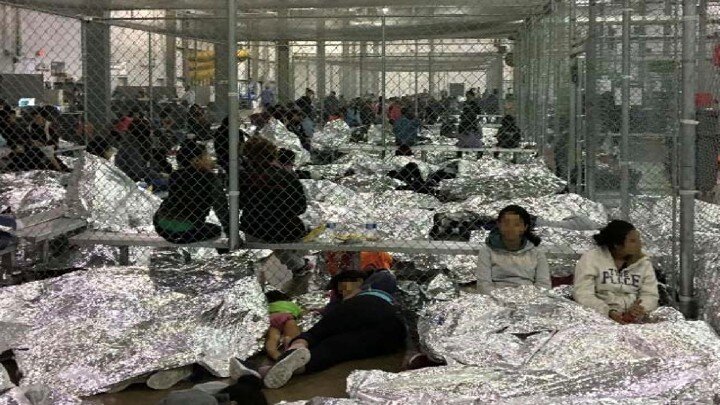Analysis of the American Immigration Crisis and a Crisis in the First Epistle of John through the Lens of a Social Scientific Model
Beth Snodderly is a past president of William Carey International University and is the editor for both the WCIU Journal and the Ralph D. Winter Research Center. She holds the degree of Doctor of Literature and Philosophy in biblical studies from the University of South Africa.
“We have people coming into the country or trying to come in, we're stopping a lot of them. … You wouldn't believe how bad these people are. These aren't people. These are animals” (https://www.usatoday.com/story/news/politics/2018/05/16/trump-immigrants-animals-mexico-democrats-sanctuary-cities/617252002/).
Top American government leaders are speaking about and treating immigrants and asylum seekers in ways that non-believers are well aware contradict Jesus’ teaching. They often quote from Matthew 25: “Whatever you did for one of the least of these brothers and sisters of mine, you did for me” (Matt. 25:40). What should be the response of followers of Jesus to the immigration crisis? An investigation of First John through the lens of a social science model, can help shed light on what is happening in America today. “Status degradation rituals” “publicly categorize, recast, and assign a moral character to deviant actors” (Malina and Neyrey 1991, 98). In the First Epistle of John the author wants to protect his community from those who have deviated from group norms and are trying to lead believers away from the truth. He does this by downgrading these peoples’ status to “children of the devil” (1 John 3:10) and urging the community not to associate with them. Somewhat similarly, many in America today fear immigrants and see them as deviants who do not belong in this country—they are to be shunned and can even be treated as non-persons. Might the similarities and differences between these 1st and 21st century crises help Jesus-followers know how to address current immigration issues?
The first part of this article begins by looking at a first century community crisis described in First John. What is the “emergency” the author perceives? How does he hope to deal with it? The elements found in a “status degradation ritual” will help us understand how the author tried to solve the community problem and what he hoped to achieve. Next we will briefly note the reasons for the current immigration crisis in America and obvious parallels to the status degradation ritual in the way government leaders are responding to the crisis. In the third part of this article we will see why the use of the ritual in First John does not necessarily justify using that ritual as an excuse to discount the human worth of immigrants seeking safety in America. What does First John have to say about the “children of God” and the “children of the devil”? How do people get assigned to one of these categories? How should believers relate to those not assigned to either category? We will see that First John has something important to say about how to relate to needy people.
Spiritual Crisis in the First Epistle of John
The author of First John was facing an emergency situation. Would the members of his community continue to walk in love for one another and in belief in Jesus as the Christ, or would they stumble by allowing former members of the community (“antichrists”) to deceive them into abandoning their faith and their love for each other? The liturgical text that addresses this situation functions as a synthesized two-part ritual to confirm Johannine believers in choosing the way of truth and to denounce those who have rejected the truth. The part that denounces the opponents of the community follows the pattern Malina and Neyrey have called a “status degradation ritual.”
Throughout the Epistle, the author’s rhetoric, or persuasive speech, contains strong contrasts. In these contrasting statements, we find a clue to the nature of the problem the community was facing. For every positive statement characterizing the believers there is, in close proximity, an opposite statement about the community’s opponents. A few examples illustrate the limited choices open to community members, with the expectation that the “children of God” would choose the right side.
1 John 1:6, 7:
If we say we have fellowship with him but walk in the darkness, we lie and do not practice the truth.
If however we walk in the light, as he is in the light, we have fellowship with one another, and the blood of Jesus his Son cleanses us from all sin.
1 John 2:23:
Everyone who denies the Son does not have the Father.
The one who confesses the Son also has the Father.
1 John 3:7b, 8a:
The one who does what is right is righteous, just as he is righteous.
The one who does what is sinful is of the devil
1 John 3:14:
We know that we have passed from death to life, because we love each other.
Anyone who does not love remains in death.
1 John 4:7b, 8:
Everyone who loves has been born of God and knows God.
The one who does not love has not known God.
1 John 5:12:
The one who has the Son has life;
The one who does not have the Son of God does not have life.
Survival of the Group?
With these opposite types of people, the community was literally facing a life or death situation. The boundaries of the group were being attacked; believers were being tempted to change their beliefs and allegiance. What could the leader of the community do? Survival of the original group and its values required that the members of the deviant group be excommunicated or “un-fellowshipped.” In the context of discussing Mediterranean group culture, Bruce Malina mentions that those who do not belong within the boundaries of given group need to be expelled “with fitting rituals” (Malina 1986, 37). Otherwise, without the ritual, the conflict and competition for the allegiance of group members could continue indefinitely.
In a chapter he co-authored with Jerome Neyrey, Malina describes in detail the nature of such a “fitting ritual,” which the authors adapted from sociologist Harold Garfinkel who observed and described “a model of how denouncers arrange for the successful denunciation of their target victims” (Malina and Neyrey 1991, 104). Such rituals “publicly categorize, recast, and assign a moral character to deviant actors. This results in a total change of their identity to that of ‘a deviant;’ they are engulfed in the master status of a deviant” (Malina and Neyrey 1991, 106).
The model for a successful degradation ritual consists of four parts. The following chart summarizes the model and applies it to the community of First John:
1. The denouncer who labels deviant behavior
• A public spokesperson who perceives the threat to the social system
• An enforcer of the rules of the group
• In First John the author is the denouncer. He expresses his concern that his “little children” (1 John 2:1) stay in fellowship with him, with each other, and with the Father and his Son, Jesus Christ (1 John 1:3). He labels the deviants as “children of the devil” (1 John 3:10).
2. The deviant whose status will be degraded
• A person or group that “threatens the moral universe of the labeler” (Malina and Neyrey 1991, 98)
• This person or group will experience a change in social status in relation to the wider group, becoming an outsider to be shunned.
• In First John, the deviant group is labeled by negative characteristics throughout the book, with the conclusion that they are “antichrists” (1 John 2:18, 19) and “children of the devil” (1 John 3:10).
3. An explanation for the need to downgrade the status of the deviant person or group
• Unacceptable behavior is described, and why the deviants must be banned from the community (Malina and Neyrey 1991, 102).
• The explanation demonstrates that the core values and beliefs of the group are the opposite of those of the deviant.
• In First John the explanation consists of a list of negative characteristics. The deviant group does not walk in the light; they deny the Son; they do what is sinful; do not love or know God; do not have the Son of God and do not have life. At the central climax of the ritual (especially 1 John 3: 7-10), the author attributes qualities to “the children of the devil” that are the opposite of the community’s values of righteousness and love.
4. Witnesses who will agree with the denouncer on the new identity of the deviant
• If successful, all concerned will be convinced the deviant did something wrong.
• Appeals to higher authority help the denouncer convince the audience of his point of view.
• In First John, the author compares his community members’ values with God’s nature and God’s will. His contrasting descriptions show that the deviant group not only does not live up to community values and beliefs, but that the opposite is true. The deviant people demonstrate qualities of the antichrist and are “children of the devil” rather than “children of God.”
Ritual Conclusion in First John
The “Elder” concludes his ritual with a somewhat abrupt warning to his witnesses, in the hope that they will agree with him in his denunciation of the opponents: “Little children, keep yourselves from idols” (1 John 5:21). The author is warning his beloved children in the last verse of the book to stay away from the deviants, the children of the devil, those who represent a false way to God. The goal of the ritual, of reading the text of First John out loud to the community, was to get rid of those people who did’t belong, because they would harm believers’ spiritual lives.
Political Crisis at the Southern American Border
The author’s fear for his community’s spiritual safety has a parallel in the political crisis at America’s southern border. Government leaders are convinced there is a physical threat to the country from the flood of immigrants fleeing their homes in Central America. The reasons for these people abandoning their home country are understandable: gang violence, extreme poverty, insufficient food, no way to make a living. Political leaders have responded to this “flood” of immigrants in ways that sound a lot like the elements of a status degradation ritual, as shown in this chart:
1. The denouncer who labels deviant behavior:
The president of the United States is the public figure who feels his social system is threatened and is trying to enforce the rules as he sees them (don’t come in illegally; stop drugs and violence from affecting the in-group citizens).
2. The deviant whose status will be degraded
Clearly the desperate immigrants trying to get into this country, whether legally or illegally, constitute the “threat to the moral universe” of the denouncer’s group. The ritual will attempt to downgrade their social status to that of non-persons (“they are animals”). They are outsiders to be shunned and pushed away from the country’s borders. They do not belong here according to the denouncer performing this public ritual.
3. An explanation for the need to downgrade the status of the deviant person or group
This aspect of the ritual, as it relates to immigrants at the southern American border, often relies on false accusations, exaggerations, and fear-stoking rhetoric (referring to an “invasion” of immigrants; labeling them “drug dealers, criminals, rapists” and “animals”). Appeals to a higher authority are missing in this explanation which is an element of the ritual model that, if available, would help convince witnesses of the case the denouncer is trying to make.
4. Witnesses who will agree with the denouncer on the new identity of the deviant
If successful, in the degradation ritual playing out in the American public sphere, the denouncer/president will have convinced the majority of Americans that immigrants do not belong in this country. The goal is to get rid of those people who don’t belong here because they are [supposedly] a danger to the physical lives of those who do belong here (citizens).
How Should Jesus-Followers Relate to Immigrants?
These two examples of attempts to degrade the status of those who do not belong to the “in-group” have a number of similarities. Both rituals are set in the context of a type of life or death emergency. The denouncers in both cases fear for the survival of the “in-group” and use strong language to attempt to persuade their audience to shun and cast out those who do not belong. In both cases, witnesses to these rituals have to evaluate the evidence presented to them and make an important decision about what to believe.
But there are also important differences. The justification for the Johannine community to shun and cast out those who didn’t belong is completely different from the justification being tried out in America today regarding immigrants. In First John, the crisis was spiritual; the author did not want his children to lose their belief in Jesus. He did not want them to lose their spiritual lives. In the American example, government leaders are doing their best to convince citizens they are in danger of losing their physical lives and safety if large numbers of immigrants are allowed to come into the country but the evidence being given is not always credible.
The ritual in First John distinguished between children of God vs. children of the devil; but what about people who don’t fall into either category? Are all immigrants in a category parallel to “children of the devil,” who need to be shunned and treated as non-persons? Should believers only expect to show love to “one another”? It’s true that the Johannnine community had a high value on showing love to each other and helping a “brother or sister in need” (1 John 3:17, 18). But a comparison of a complex transition in First John (see Snodderly 2009, 77-79) shows a pairing between a preliminary short discussion of whom the believer should love in 1 John 3:14-18, with the full treatment in 1 John 4:7-21 of what it means to love “one another.” In this longer section we see God’s concern is for the “world”: “This is how God showed his love among us: He sent his one and only Son into the world that we might live through him. … Dear friends, since God so loved us, we also ought to love one another” (1 John 4:9, 11). Loving “one another” includes more than those in our “in-group.”
The First Epistle of John demonstrates a model of human behavior that we see being played out in America today. But the reasons for the use of this model in First John do not apply to 21st century America. For those following Jesus’ pattern of love for “one another” and the “world,” “there is no fear in love” (1 John 4:18). A lot of the explanation being given for degrading the status of immigrants and rejecting them is based on fear rather than facts. God’s way is for his people to love one another, not to reject the needy.
“This is how we know what love is: Jesus Christ laid down his life for us. And we ought to lay down our lives for our brothers and sisters [and others in the world whom God loves!]. If anyone has material possessions and sees a brother or sister in need but has no pity on them, how can the love of God be in that person? Dear children, let us not love with words or speech but with actions and in truth” (1 John 3:16-18).
References
Boomershine, Thomas E. 1994. “Jesus of Nazareth and the Watershed of Ancient Orality and Literacy.” Semeia 65: 7-36.
Garfinkel, Harold. 1956. “Conditions of Successful Degradation Ceremonies.” American Journal of Sociology. 61: 420-24.
Longenecker, Bruce W. 2005. Rhetoric at the Boundaries. Waco, TX: Baylor University Press.
Malina, Bruce J. 1986. Christian Origins and Cultural Anthropology: Practical Models for Biblical Interpretation. Atlanta: John Knox.
Malina, Bruce J. and Jerome H. Neyrey. 1991. Conflict in Luke-Acts: Labeling and Deviance Theory. In The Social World of Luke-Acts: Models for Interpretation, edited by Jerome H. Neyrey, 97-122. Peabody, MA: Hendrickson.
Snodderly, Beth and D.G. Van der Merwe. 2007. “Status Degradation in First John: Social Scientific and Literary Perspectives.” Acta Patristica et Byzantina 18: 179-213. https://www.academia.edu/1789849/Status_Degradation_Ritual_in_First_John
Snodderly, Beth. 2009. “A Socio-Rhetorical Investigation of the Johannine Understanding of “theWorks of the Devil” in 1 John 3:8.” DLitt et Phil diss., University of South Africa. https://www.academia.edu/1789850/Socio-rhetorical_Analysis_of_1_John_dissertation_



